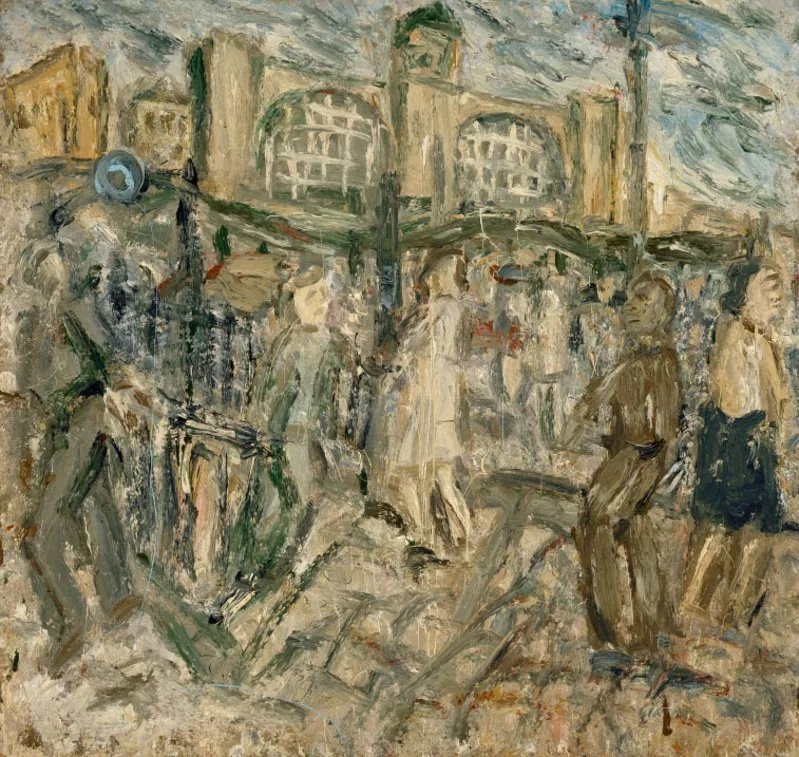The Menswear Market
15 July 2021
With sustainability increasingly important to fashion lovers, the market for vintage menswear has found a new audience.
Benji Walters
Benji Walters is a London based freelance fashion and culture journalist with a particular interest in menswear, film and music.
A very rare Shawl Collar Tail Suit, 1958, by Stimson, Eaton and Hanover Square London.
Image courtesy of Hornets Kensington.
Menswear enthusiasts of a nostalgic bent have understood the value of shopping second-hand since time immemorial. Whether mods seeking snug-fit mohair or Goodwood Revivalists chasing spivvy chalk-stripes, obsessives hooked on a particular decade know that going vintage is the surest way to get their hands on those period-perfect details.
This traditional breed calls vintage menswear meccas like Hornets of Kensington home, where it’s primarily rare, top-end bespoke that’s most in demand. Think hallowed stalwarts like Anderson and Sheppard, Fred Astaire’s tailor of choice, or Tommy Nutter, the house that brought Savile Row kicking and screaming into the 1970s with its waisted jackets and broad, Jagger-endorsed lapels. “Our motto has always been style, not fashion,” says the shop’s owner, Bill Hornets.
But if until recently vintage menswear was synonymous with committed romantics and reenactors, the kind who might produce a jeweller’s glass to better inspect the serial numbers on a Vietnam-era M-65 jacket, then things have shifted gear in the last five years. As more and more consumers become wary of fast fashion’s ethical shortcomings (not to mention its mass-produced homogeneity), the sustainability and distinctiveness inherent to vintage has become a powerful draw. Second-hand has found currency among a younger audience, one far more likely to make purchases in-app than amid the mothball must of a bricks-and-mortar outpost. And, unlike their debonair, masculinist forebears, one unafraid to discuss men’s fashion with a capital F.
For David Bradshaw, the seasoned editor and mega-stylist who was instrumental in shaping Prada’s game-changing menswear line from its conception – and whose personal archive provokes pangs of violent envy in this particular writer – heritage style’s grip on the vintage world is loosening. “As ‘used’ pieces take their rightful place in conversations surrounding sustainable fashion,” he explains, “and a new generation of mainly online dealers emerge post-Covid, I suspect vintage menswear will show signs of a facelift.” For Bradshaw, put briefly, that means “less tweed and more nylon.”
Helmut Lang, S/S 2004 Wrestling Belt.
Item sold by Byronesque, image credit Fashion Anthology.
If the surge in popularity enjoyed by online resale communities like Vestiaire Collective and Grailed is anything to go by, then that prediction seems shrewd. The latter, in particular, has become both marketplace and fraternity for legions of unabashed male fashion nerds between the ages of 15 and 35: guys who count fashion-forward rappers like Lil Uzi Vert and Kanye West among their style heroes, and who’ll take to Instagram to debate designers with the impassioned tribalism of football fans.
It’s not Savile Row that attracts the big bucks here as much as archival “grails” from the handful of legendary auteurs worshiped as demi-gods on the site. Greatest hits from the likes of Yohji Yamamoto and Hedi Slimane are always in demand here: Slimane’s Saint Laurent-era leather jackets still go for $2000 and above, while similar pieces from his revered Dior Homme years in the ‘00s can rake in double that.
The comments section, meanwhile, is invariably an informed, if volatile, space; woe betides he who can’t distinguish the bondage strapped garments designed by Austrian minimalist Helmut Lang’s own hand (which regularly hit the $1300-plus mark) from the vastly inferior variations made by the label following his departure in 2005 – which can struggle to sell at all.
But of all those designers fetishized on the site (and fetishized is the right word: these are men who are just as keen on limited edition photography books and other brand esoterica as they are the clothes themselves), it’s Belgian avant-gardist Raf Simons who remains the surest stock. His seminal collections at the turn of the millennium mashed DIY militaria with tailoring of a gothic severity, and rank among the most critically lauded shows in haute menswear’s history.
Sure enough, though these museum-grade pieces don’t quite reach the eye-watering numbers commanded by some limited-edition Hermes’ Birkin handbags – which are practically bullion, such is their constancy – they still fetch a pretty penny. One camouflaged, patched MA-1 bomber jacket from Simons’ AW01 “Riot, Riot, Riot” collection sold for over $30,000 on Grailed last year.
And if you’re wondering what makes a good investment buy today, it’s worth remembering that the garments which hold their value best might not always be what’s buzziest right now. There’s often a contrast between short-term profit-makers – like white-hot Supreme collaborations that can be flipped instantly for double the value thanks to their scarcity, but which might plummet six months later when the hype peters out – and long-term investment pieces from respected designers.
Those items which retain or appreciate in value as the years go by tend to bear the bold aesthetic signature of their designer and be in some sense important to the wider story of men’s fashion. Yet they also tend to be pieces that are fundamentally wearable as clothing. Indeed, the sheer volume of “fit pics” (as outfit selfies are known in the Grailed community) posted with the #foundongrailed Instagram tag seems to suggest that those paying for important pieces are doing so primarily to flex them in public – just as their designers intended.
In a world where couture collectors keep their Sotheby’s-grade Chanel in cryogenic ziplock, and sneakerheads ensure their limited-edition Jordans never so much as sniff the court, there’s something oddly refreshing about the new breed of archive-mad male peacock who buys mostly, it seems, to brag. Conceptions of gender and masculinity may well be changing, and all for the better. But young men competing amongst themselves for attention and status? That, it seems, never goes out of style.








